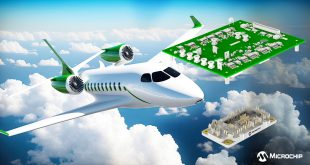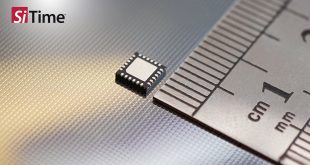By Jamie Bennett, VP of Engineering, IoT & Devices at Canonical – the company behind Ubuntu.
2018 has seen the Internet of Things (IoT) increasingly move from proof-of-concept to widespread production, with the number of connected devices owned by consumers growing from 35 per cent in 2017 to 44 per cent in September 2018. But vulnerabilities are threatening to tear down trust in the connected world, especially as IoT moves into B2B spaces and industrial sectors where risks are much higher. Security must take precedence over innovation if confidence in IoT is to grow and severe security issues are to be avoided. If we get this right though, adoption will continue at an exponential rate, greater consolidation will drive developers to edge computing, while connected applications will unlock multi-purpose robots, leading to far greater capability and functionality.
IoT security to take centre stage
 Security is always prevalent within IoT given the ever-present threats faced, but the outlook has somewhat brightened since the IoT Code of Practice was introduced by the UK Government in October. This was merely an initial guideline, and next year we hope to see binding agreements to strengthen this security initiative. However, the question of who is responsible for this standardisation across the IoT is yet to be answered.
Security is always prevalent within IoT given the ever-present threats faced, but the outlook has somewhat brightened since the IoT Code of Practice was introduced by the UK Government in October. This was merely an initial guideline, and next year we hope to see binding agreements to strengthen this security initiative. However, the question of who is responsible for this standardisation across the IoT is yet to be answered.
The Government may take the lead and legally enforce that companies and manufacturers adhere to regimented security guidelines. Businesses themselves may come up with their own regulations in order to be seen as maintaining security, upholding their customers data, and conducting themselves in the most ethical manner possible. This may evolve organically, or could come as a result of a massive malware breach, creating a call to action, forcing decision makers to ensure tighter security as a matter of urgency. The will include the need for devices to be constantly updateable, and able to react quickly to cyber-attacks and malware.
Industrial IoT and healthcare to ramp up
In 2019, the potential of IoT within industrial sectors (IIoT) will be high, but this new world still isn’t properly understood. The big institutions have not seen the benefits as they already believe they have solutions which are sound. IoT within connected cars, smart building and in farming will accelerate as the ROI is more clear cut.
Healthcare is set to undergo significant IoT transformation in 2019, however the issues within IoT security are amplified when applied to the critical infrastructure and sensitive data involved. The NHS is reportedly looking to adopt IoT across the board but with the current lack of solidarity in forming an irrefutable code of conduct, this will not be straightforward. Devices such as pacemakers and insulin pumps are already vulnerable to hacking, and as IoT becomes more widely used within healthcare and more specifically in life-saving systems, these vulnerabilities could be taken advantage of.
Multi-purpose devices, robotics & 5G
We will see IoT whiteboxes become more prevalent, devices that can be updated at the customer site. In fact, more companies will begin creating and publishing new applications and services via their own branded IoT app stores, which will extend device lifecycles as well as increase customer retention and revenues. The app store approach will also encourage the creation of license models and revenue streams based on specific feature enablement and user behaviour.
This is representative of a common thread within robotics, with a split forming between multi-purpose and specific purpose hardware. An example of the former would be the robots we’ve seen for use in care-homes, able to complete a whole range of actions and functions including managing medication for patients, checking heart rate, dehydration levels, and even providing entertainment. The second kind are robots designed to serve a single purpose. For example, the Small Robot Company farming robots, one completing a single task such as fertilizing seeds, another collecting and uploading data. The reusing of software and modification is set to expand next year, which will push down hardware costs and create thriving SaaS models within robotics.
5G has been promised for 2019, but in reality this is years away. What we’re going to see being rolled out can be defined as an enhanced 4G hybrid model. However, with the current fixed networks, 5G is not yet essential. Once industries scale up and begin adopting edge computing, it will become crucial to add a 5G fast lane for better connectivity.
Consolidation and integration
In 2018, the IoT market entered a phase of consolidation. The enormous mergers we have seen this year will mean consolidation and integration will go even further, with open source driving greater innovation. There will be a developer drive to the edge, which will be a catalyst for platform consolidation, bringing harmony between data centres and edge computing. As a result, cloud platforms will grow more capable and agile than ever. Alexa’s success has echoed, and we have already begun to see multi-use devices move in to the business space.
 CIE Components in Electronics
CIE Components in Electronics



